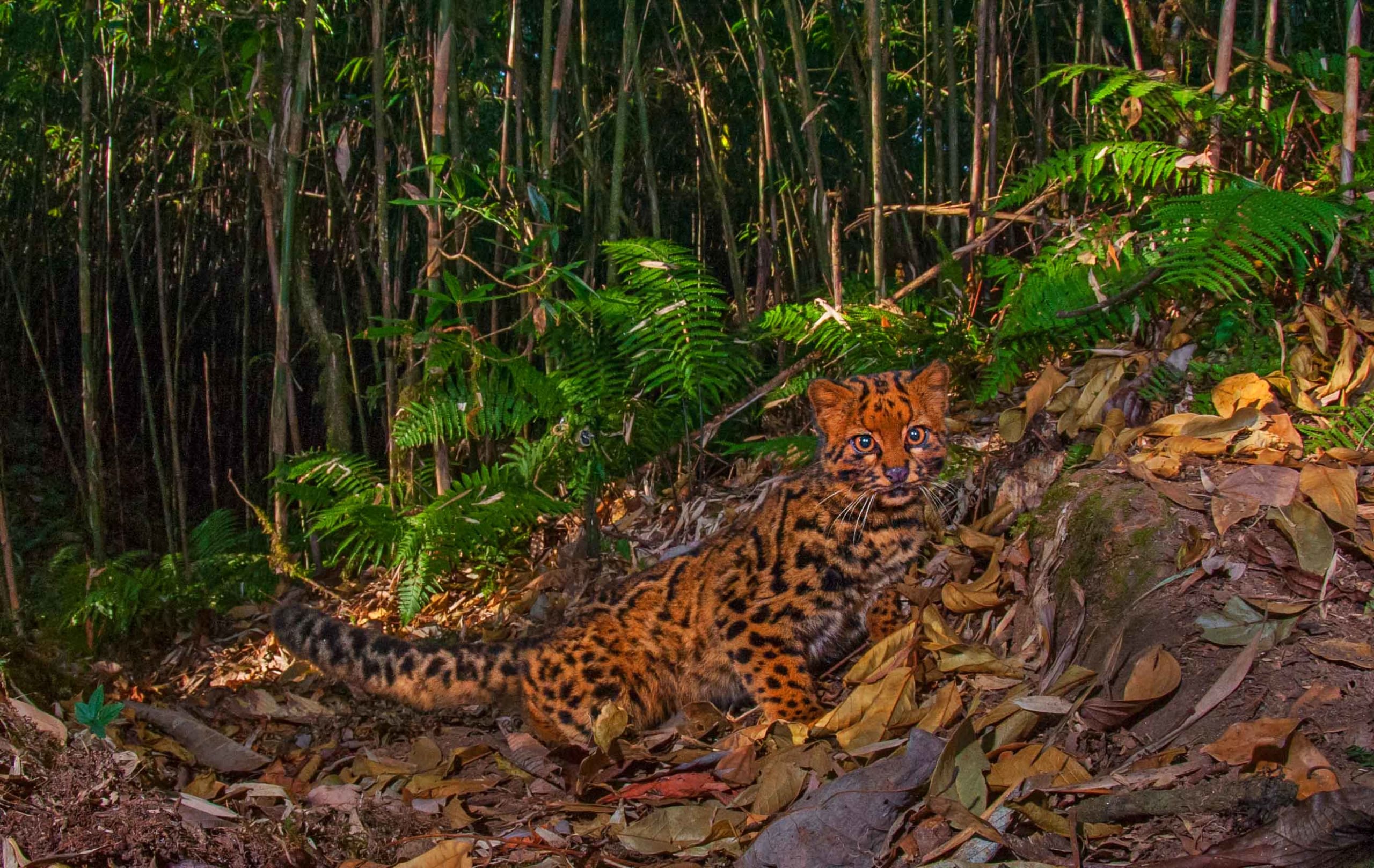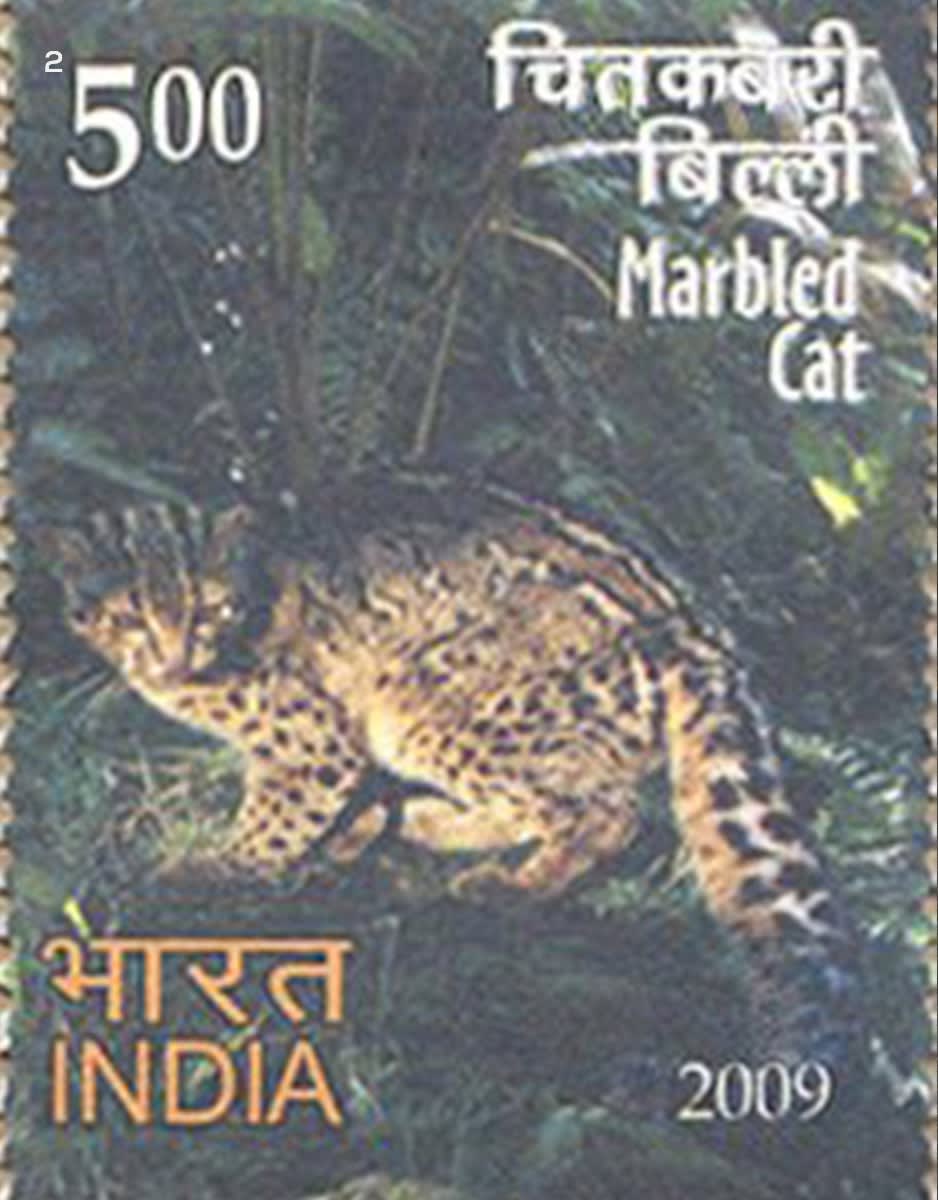 Listen to this article
•
15:34 min
Listen to this article
•
15:34 min
Felines, big and small, are important motifs in the writings of renowned Argentine litterateur Jorge Luis Borges. His tigers are not pests that plunder livestock farms but beings that inspire transcendental awe. In his poem “To a Cat”, an ode to its domestic counterparts, he writes about the mutually complementing relationship of cats with humans/about the elusive nature of cats that exist on their own terms, notwithstanding the space they share with humans. Borges was as enchanted by the furry animal as some of us are.
Elusive still are marbled cats (Pardofelis marmorat), a small wild cat species that has only been visible to humans relatively since the 1990s, with camera traps set up by wildlife scientists across its habitats. Native to densely wooded patches of the Eastern Himalayas and Southeast Asia, marbled cats are small cats weighing 2-5 kilograms. They are 45-62 cm long and have thick, furry tails that are perhaps used as a counterbalance during movement in the trees. Their grey or brown fur is embellished with dark spots, stripes, and a distinctive marbled pattern (which earns them their popular name).
Captive-bred marbled cats have an estimated gestation period of 66-82 days. Kittens weigh between 61-85 grams and open their eyes around 12 days of age. At two months, they start eating solid food and climbing trees actively. These cats reach sexual maturity at 21-22 months and can live up to 12 years in captivity.

Cover photo: A short, broad face, rounded ears, and an extremely long, bushy tail are a few distinctive features of the marbled cat photographed here at the Neora Valley National Park in West Bengal. Photo: Dhritiman Mukherjee
Recognised for their climbing abilities and swift movements across forest canopies, these cats spend a good part of the day on treetops and were previously thought to be nocturnal. But a 2019 study in Nagaland found them active during the day as well. The forest canopy probably provides marbled cats with much of their prey, including birds, rodents such as squirrels, and reptiles.
In India, marbled cats are confined within the Northeastern states, where their specific habitat requirements remain intact. But their days seem to be numbered. The species is listed as “Near Threatened” by the International Union for Conservation of Nature (IUCN) as most of its primary habitats are degrading rapidly.
This wild cat is of ritualistic value to some indigenous communities and is hunted for its skin and body parts. For instance, near Pakke Tiger Reserve in Arunachal Pradesh, a tribal chief was recorded displaying the skin of a marbled cat as a ritual object to a group of researchers as per a 2011 report by the IUCN cat specialist group. However, as the lines between traditional hunting practices and commercial profiteering are increasingly blurred, these semi-arboreal cats have become severely threatened.

Perhaps the biggest threat to these enigmatic felines is the degradation of tropical forests. With the boom in monoculture plantations and public infrastructure projects like arterial roads aimed at boosting connectivity, the Northeast, where the species is primarily distributed, has seen massive changes in land use.
Charisma goes a long way in getting the conservation spotlight on a species. Environmental geographer Maan Barua has shown in a study published in 2011 in the journal Biodiversity and Conversation that charismatic species such as tigers, pandas, or elephants draw much conservation interest while less visible and less charismatic species remain overshadowed.
Thus, the not-considered-so-charismatic small wildcats miss out on their share of conservation interest compared to their big kin.
In a study on marbled cats of Southeast Asia published in the Journal of Mammalogy in 2017, researchers found that Dampa Tiger Reserve in Mizoram had around five of these rare cats per 100 sq km. The study led by independent scientist Priya Singh recorded a total of 36 marbled cats in over 4,962 trap nights, highlighting the reserve as an important sanctuary of these felids whose population remains uncertain.
The study also points out that the tiger-centred forest management and conservation practices in India often overshadow the conservation focus and requirements of small cats sharing the same landscape. Singh says that although Dampa Tiger Reserve has a healthy population of small felines, it does not get the respect or recognition it deserves due to the absence of tigers.
Recently, the Global Tiger Forum (GTF) and the Ministry of Environment, Forest and Climate Change (MoEFCC) started a wild cats conservation project with the state governments of Arunachal Pradesh, Rajasthan, and Uttar Pradesh. Called “Strengthening conservation and resilience of globally significant wild cat landscapes through a focus on small cat and leopard conservation”, the project aims to conserve the globally significant wild cat landscapes in northern, northeastern and western India through a landscape conservation approach.
“Our focus is on protecting small cats inside and outside protected areas. The programme involves the study of habit and habitat of these cats, to draft a conservation action plan,” says Rajesh Gopal, Secretary General of Global Tiger Forum. He adds that research is the first step towards devising an effective conservation plan for these relatively little-known cats.
Marbled cats are listed under Schedule I of the Wildlife (Protection) Act of India, 1972, enjoying the highest level of protection against poaching. Strict enforcement of the law could go a long way in saving them.








